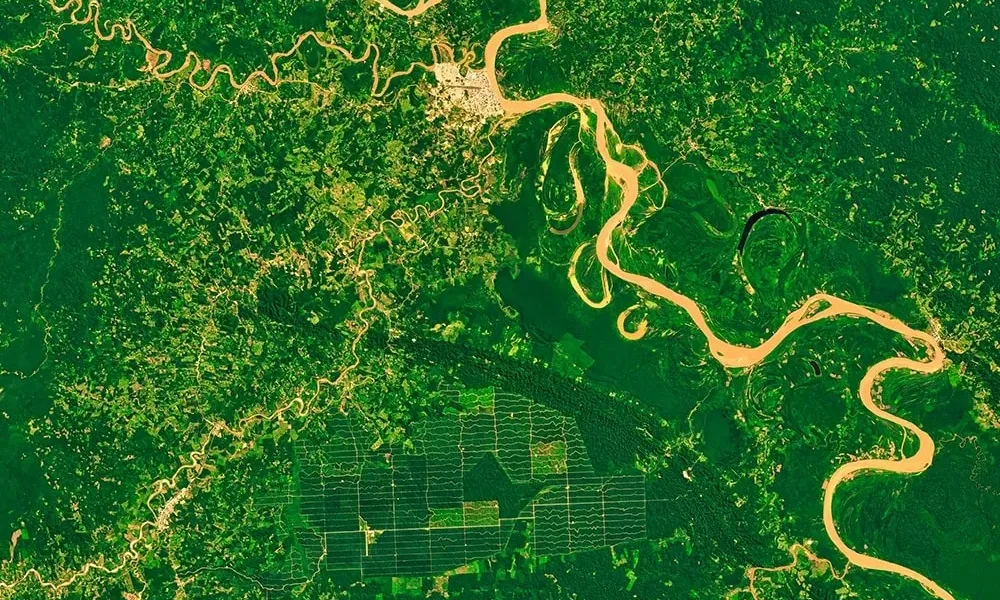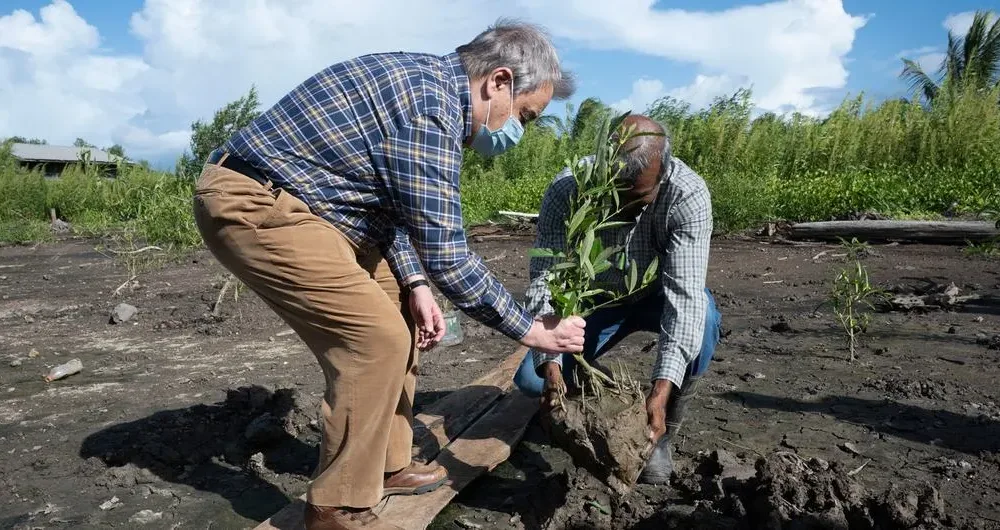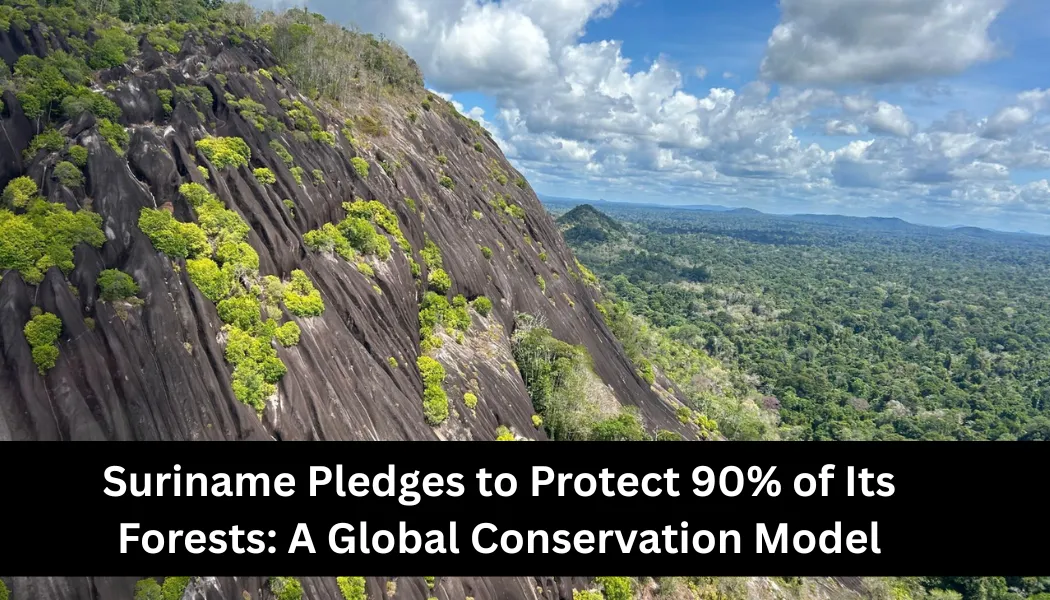In a world grappling with climate change, biodiversity loss, and deforestation, bold conservation commitments are rare yet essential. Recently, Suriname, a small South American nation, made headlines by pledging to protect 90% of its forests, an ambitious target that far exceeds the global conservation benchmark of protecting 30% of terrestrial ecosystems by 2030. This unprecedented commitment not only positions Suriname as a leader in environmental stewardship but also offers a model for sustainable development that balances ecological protection with socio-economic growth.
This article explores the significance of Suriname’s pledge, the global conservation context, the benefits of forest preservation, challenges in implementation, and the broader implications for climate action, biodiversity, and local communities.
Table of contents
- The Global Conservation Context
- Suriname’s Forests: An Overview
- Benefits of Suriname’s Forest Protection Pledge
- Strategies for Achieving 90% Forest Protection
- Challenges and Considerations
- Global Implications
- Case Studies of Successful Forest Conservation
- The Role of Indigenous Communities
- Monitoring Progress and Ensuring Accountability
- Long-Term Benefits
- Conclusion
The Global Conservation Context
1. The 30×30 Initiative
The international community, including the United Nations and Convention on Biological Diversity (CBD), has set a 30×30 goal: protect at least 30% of Earth’s land and oceans by 2030. This target aims to curb biodiversity loss, safeguard ecosystems, and mitigate climate change.
2. Current Challenges
Despite global agreements, deforestation and habitat destruction continue at alarming rates:
- Approximately 10 million hectares of forests are lost annually, largely due to agriculture, logging, and infrastructure development.
- Biodiversity is declining faster than at any point in human history, with thousands of species threatened with extinction.
- Forest degradation releases carbon dioxide, exacerbating global warming.
3. Why Suriname Stands Out
While many countries aim for 30% protection, Suriname’s pledge of 90% forest conservation is extraordinary. It represents a proactive approach, emphasizing preservation over reactive measures, and sets a precedent for high-forest-cover nations to prioritize long-term ecological health.
Suriname’s Forests: An Overview
1. Geographic and Ecological Significance
- Suriname is covered by roughly 93% forest, much of it tropical rainforest.
- The forests house unique biodiversity, including jaguars, giant river otters, harpy eagles, and countless plant species.
- River systems and wetlands within these forests play crucial roles in carbon storage, flood regulation, and water purification.
2. Carbon Sequestration Potential
- Suriname’s forests act as a carbon sink, absorbing millions of tons of CO₂ annually.
- Protecting 90% of these forests contributes significantly to global climate mitigation efforts.
3. Cultural and Indigenous Importance
- Indigenous communities rely on forests for sustenance, traditional practices, and livelihoods.
- Preservation ensures the survival of cultural heritage and the rights of local populations.
Benefits of Suriname’s Forest Protection Pledge

1. Climate Change Mitigation
- Forests absorb greenhouse gases, reducing global carbon levels.
- Preserving large, contiguous forest areas helps maintain climate stability regionally and globally.
2. Biodiversity Conservation
- Protecting habitats ensures survival of endangered and endemic species.
- Large forests support ecological balance, pollination, and soil health.
3. Water Resource Management
- Forests regulate watersheds, prevent soil erosion, and maintain clean water supplies.
- Healthy forests reduce the risk of floods and droughts.
4. Economic and Sustainable Development Opportunities
- Sustainable forest management, eco-tourism, and non-timber forest products can generate income.
- Protecting forests positions Suriname for international funding through climate finance mechanisms, such as REDD+ (Reducing Emissions from Deforestation and Forest Degradation).
5. Global Leadership in Conservation
- Suriname’s ambitious pledge sets an example for other nations with high forest cover.
- The commitment demonstrates that bold environmental policies are feasible and can coexist with development goals.
Strategies for Achieving 90% Forest Protection
1. Legal and Policy Framework
- Establishing strict regulations on logging, mining, and land conversion.
- Expanding national parks, reserves, and protected areas to formalize conservation efforts.
- Integrating indigenous land rights and community-based management into forest policies.
2. Community Engagement
- Empowering local and indigenous communities to manage forest resources sustainably.
- Offering incentives for conservation and monitoring activities.
- Promoting awareness programs on the importance of forest preservation.
3. Sustainable Economic Alternatives
- Eco-tourism initiatives that provide employment while minimizing environmental impact.
- Promotion of non-timber forest products, such as nuts, fruits, and medicinal plants.
- Support for sustainable agriculture and agroforestry practices to reduce pressure on natural forests.
4. International Collaboration and Funding
- Participation in global climate finance mechanisms, such as REDD+ and Green Climate Fund projects.
- Partnerships with environmental NGOs and research institutions for technical expertise.
- Engagement in regional conservation initiatives to combat illegal logging and wildlife trafficking.
5. Monitoring and Technology
- Utilizing satellite imagery, drones, and GIS mapping to monitor forest cover and detect illegal activities.
- Implementing transparent reporting systems to track progress and ensure accountability.
Challenges and Considerations
While Suriname’s pledge is ambitious, several challenges must be addressed:
1. Economic Pressures
- Dependence on mining, logging, and agriculture can create tensions between economic growth and forest protection.
- Balancing short-term economic needs with long-term conservation goals is critical.
2. Illegal Logging and Land Encroachment
- Enforcement in remote forest areas is challenging.
- Strengthening law enforcement and community vigilance is necessary to prevent unauthorized exploitation.
3. Climate Change Impacts
- Forests are vulnerable to climate-induced events such as droughts, wildfires, and invasive species.
- Adaptive management strategies are essential to maintain ecosystem resilience.
4. Infrastructure Development
- Road construction, urban expansion, and hydroelectric projects can fragment habitats.
- Strategic planning and environmental impact assessments are crucial.
5. Funding and Capacity
- Sustaining long-term protection requires consistent funding, technical expertise, and governance capacity.
- International partnerships and climate finance can provide necessary resources.
Global Implications
Suriname’s pledge has far-reaching implications:

1. Advancing Climate Goals
- Protecting 90% of forests contributes significantly to carbon sequestration targets and global climate mitigation.
2. Setting an Example
- Suriname’s ambitious target demonstrates that high-forest-cover countries can take bold action.
- Other nations may adopt more aggressive conservation policies as a result.
3. Enhancing Biodiversity Corridors
- Large, contiguous forests provide corridors for wildlife migration, supporting ecosystem resilience and biodiversity preservation.
4. Promoting International Collaboration
- Suriname can engage in knowledge sharing, conservation research, and cross-border initiatives with neighboring countries.
5. Influence on Global Policy
- Suriname’s commitment may influence international climate negotiations, encouraging stronger forest conservation pledges worldwide.
Case Studies of Successful Forest Conservation
1. Costa Rica
- Achieved nearly 30% forest cover protection through payment for ecosystem services and national parks.
- Demonstrated economic benefits through eco-tourism and carbon credits.
2. Bhutan
- Maintains over 70% forest cover while promoting sustainable development.
- Carbon-negative policies provide a model for balancing conservation and growth.
3. Suriname’s Unique Advantage
- With 93% forest cover already, Suriname has the opportunity to set a global precedent with its 90% pledge.
- Long-term success relies on governance, community participation, and international collaboration.
The Role of Indigenous Communities
Indigenous peoples are key stewards of Suriname’s forests:
- Traditional knowledge contributes to sustainable forest management and biodiversity protection.
- Empowering indigenous communities through land rights, training, and participation ensures ethical and effective conservation.
- Collaborative management strengthens social cohesion and aligns conservation with cultural preservation.
Monitoring Progress and Ensuring Accountability
1. Use of Technology
- Satellite monitoring and drones can track deforestation in real time.
- GIS mapping helps visualize forest cover, habitat health, and protected area boundaries.
2. Transparent Reporting
- Publicly available reports ensure accountability to citizens and international partners.
- Third-party audits and independent research provide credibility to conservation efforts.
3. Performance Metrics
- Tracking reforestation, biodiversity indices, carbon sequestration, and community engagement ensures measurable outcomes.
Long-Term Benefits
1. Environmental Resilience
- Preserved forests buffer climate impacts, prevent soil erosion, and regulate water cycles.
2. Economic Stability
- Sustainable forestry, eco-tourism, and carbon finance provide stable income streams.
3. Global Leadership
- Suriname positions itself as a conservation leader, attracting partnerships, funding, and recognition.
4. Cultural Preservation
- Indigenous communities maintain traditional practices and livelihoods, ensuring cultural heritage endures.
5. Health and Well-Being
- Forest ecosystems support clean air, medicinal plants, and recreational spaces, enhancing human health.
Conclusion
Suriname’s pledge to protect 90% of its forests is an extraordinary commitment to environmental stewardship, far exceeding the global 30% conservation goal. By safeguarding its tropical rainforests, Suriname addresses climate change, protects biodiversity, supports indigenous communities, and demonstrates that sustainable development and ecological preservation can coexist.
Challenges such as economic pressures, illegal logging, and climate risks remain, but with effective governance, community engagement, and international support, Suriname can achieve its ambitious target. This initiative not only benefits Suriname but also contributes to global conservation goals, setting a precedent for other nations to follow.
In a world urgently needing bold climate action, Suriname’s forests stand as a beacon of hope—a testament to the power of proactive conservation and a reminder that protecting nature is not just a local responsibility but a global imperative.
